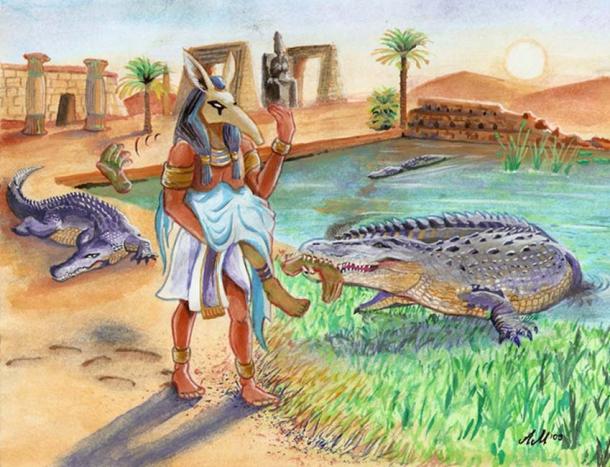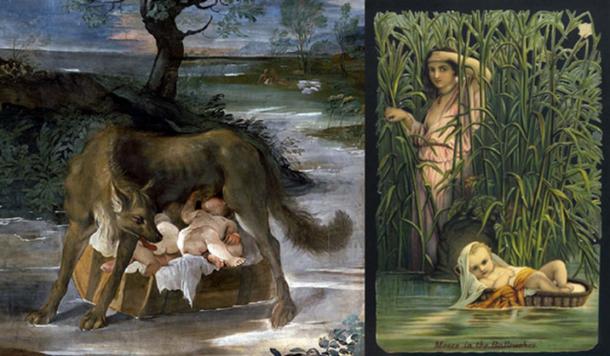 1
1

Arkaim and the texts of Rgveda about his builders
 25. 04. 2024
25. 04. 2024



 23. 03. 2022
23. 03. 2022

The stories of Romulus and Remus, Osiris and Moses share a common ground. Why is the overarching theme of the ancient people, and the beginning of their legacy, a man floating on a river to escape danger from another threatening man? Is it a coincidence that the leaders of these people were all sent down the river to escape persecution? Or are all these stories practically the same? This article examines the similarities of the stories of the founding of ancient Rome, of ancient Egypt and ancient Israel.
In the story Romulus and Remus The twin brothers, the founders of ancient Rome, are sent across the Tiber River in a basket by their mother, Princess Rhee, to escape persecution from King Amulius, who dethroned Princess Rhey's father, Numitor. He will find them wolf femalewho brings them up as their own.
In the story Osiris they are he and his wife Isis beloved leaders of the Egyptian people. Osiris' brother Seth he envies him and devises a plan to get rid of his famous brother. He builds a floating ship and deceives his brother to get into the vessel, then locks it in and sends him down the Nile. The queen will then find the ship.
In the story of To Moses his mother fears for his life because the current pharaoh has issued an edict to kill all the male Jewish children in the kingdom by throwing them into the river to drown. He sends him along the river Nile in a basket, and ironically, Pharaoh's daughter discovers him and raises him as his own, along with the help of Moses 'mother, whom Moses' sister Miriam introduces to the princess as a nurse.
Moses becomes the king's favorite, the second stepson. He masters many mysteries and teachings kemet (Egypt).
Except for a few details, the beginnings of these stories are identical. There is a villain who is a great threat to men and is somehow sent down the river. A woman is waiting on the banks of the river to save him. But that's the end of the similarities.
Romulus and Remus eventually grow into menwho then argue about the cities they should build. Romulus kills Rema and then it is founded by him Rome. Moses eventually, as an adult, he will bring his Jewish people out of Egyptian slavery to freedom. Osiris is found by Seth and it is cut into pieces, which it spreads all over Egypt. Isis finds parts of his body and will raise him up long enough to conceive a son by name Horus, which he will avenge his uncle Seth.

The Myth of Osiris and Isis - Seth's Wrath
Despite the fact that each story ends very differently, the details are very similar in all three. The story of Romulus and Remus is similar to the story of Mosesbecause a woman saves them and raises them. However, the essential difference between the two stories is that one woman is a wolf and the other is a daughter of a pharaoh. In the case of Osiris' story, a woman also saves him from the water, but does not raise him; instead, he passes on his body Isis.
Then she's here aspect of a quarreling brotherwhich is included in the story of Romulus and Remus and the story of Osiris and Seth. Romulus and Remus dispute arise when they are adults - they argue over who should rule. Osiris and Seth also quarrel when they are adults, but this is because Seth envies Osiris' rule.
The last but fundamental similarity is in how everyone gets down the river. Romulus and Remus swim in a basket; Moses floats in a basket; and Osiris floats in what is described as a tomb. The unifying factor between the three stories is significant, and the elements of all three seem to overlap.

Lactus and Remus lactating wolves; Moses in Sitina
Are the stories of Romulus and Remus, Osiris and Moses truly unique in origin, or do they all come from the same source? There are still questions to which we lack clear answers.

 12.03.2022
12.03.2022

 12.03.2022
12.03.2022

 12.03.2022
12.03.2022